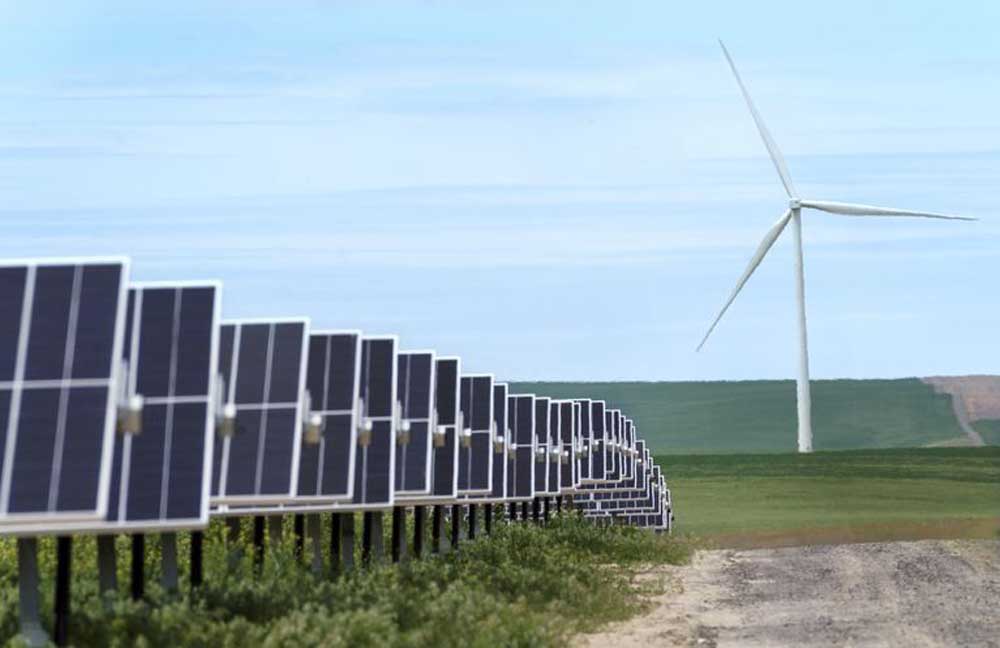Oregon fuel prices could rise due to Israel, Hamas war if conflict spreads
Published 3:00 pm Saturday, October 14, 2023

- Fuel prices in La Grande remain under the state average with regular unleaded priced at $4.35 per gallon at the Mobile gas station on Thursday, Oct. 12, 2023. Gas prices could be impacted by the war between Hamas and Israel, especially if the conflict spreads and creates instability in the Middle East.
LA GRANDE — Gas prices in Eastern Oregon could rise as a result of the war between Hamas and Israel.
So far the war has had a limited impact on average regional fuel prices, but there are concerns that the attack on Israel could lead to further unrest in the Middle East, according to AAA Director of Public Affairs Marie Dodds. Instability in the region has the potential to send crude oil prices higher.
“It’s horrific what is happening and the human toll, you know, there are no words,” she said. “At this point, we’re not seeing a major impact on gas prices due to the conflict involving Israel and Hamas.”
The average price of gasoline in Oregon was $4.58 per gallon for regular unleaded as of Friday, Oct. 13, which is a slight decrease from last week’s average of $4.72, according to AAA gas prices tracker.
This drop is typical of the season, Dodds said, in part due to the decrease in demand with less people traveling compared to the summer and the switch to winter blend fuel.
Retail prices for fuel are higher than the statewide average in both Wallowa and Grant counties — with an average cost of $4.75 and $4.71 per gallon, respectively, for regular unleaded. Union County is slightly below the state average at $4.43 per gallon, while both Baker and Umatilla counties are well under the average at $4.31 and $4.38 per gallon, respectively.
There was a slight bump in crude oil prices, Dodds said. West Texas Intermediate — the main crude oil benchmark for the United States — went up to $87 a barrel compared to $83 the week prior.
“Crude oil prices make up about 50% of what we spend at the pump. So, when crude oil prices rise, our gas prices rise. When crude oil prices fall, our gas prices tend to fall as well,” Dodds said.
But now, concerns loom over whether the Middle East conflict could prompt a sudden increase in prices if violence spreads, impacting other oil-producing nations.
“If there is a full blown conflict, the markets are going to take that into account. The big fear is instability in that region. And if the conflict, as horrific as it is, stays limited in its current geographic area, we probably won’t see a huge impact on oil prices,” Dodds said. “But if it spreads, or it generates unrest in other Middle Eastern countries, anything can happen.”
The war in Ukraine had a similar impact on regional gas prices because Russia is one of the world’s major oil exporters. Fuel prices soared to over $5 a gallon in the summer of 2022 due to the increased cost of crude oil following bans on Russian oil.
“The Russia Ukraine situation continues to have an impact,” Dodds said.
In early 2023 Russia announced a unilateral reduction in oil production. Throughout the year other major oil producers — including Saudi Arabia, Iraq, the United Arab Emirates, Kuwait, Kazakhstan, Algeria and Oman — also announced cuts to oil.
In September both Russia and Saudi Arabia announced they would be extending their voluntary oil production cuts until the end of the year — removing 1.3 million barrels of crude oil from the global market. Dodds said that this caused oil prices to surge to around $94 a barrel.









